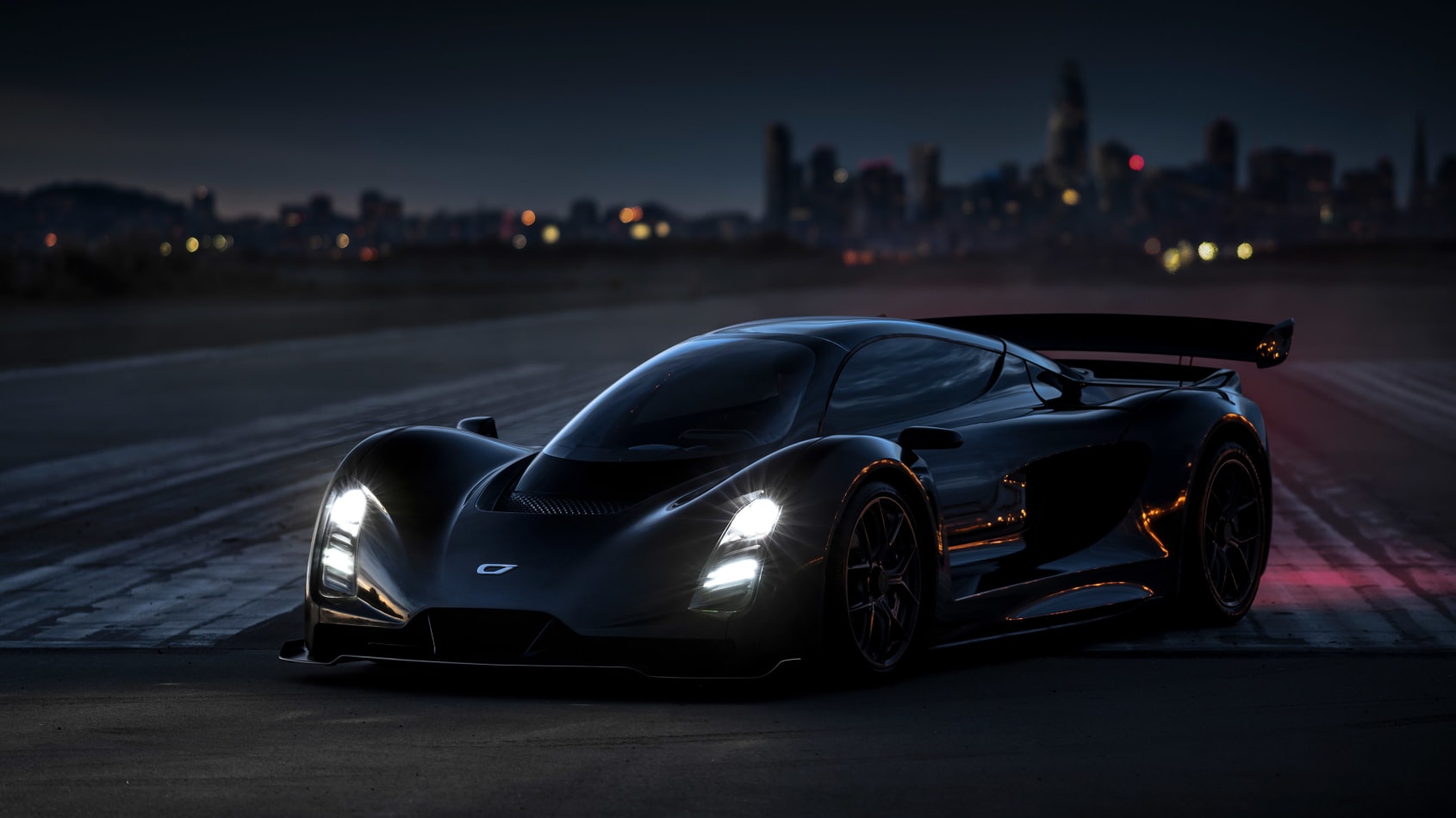1233bhp Czinger 21C supercar teased before Geneva motor show debut
American manufacturer Czinger plans to unveil a hypercar boasting 3D-printed construction and an in-house developed hybrid powertrain at next month's Geneva International Motor Show. Claims to do 0-100kmph in 1.9seconds! For context, the Tesla Roadster does 0-100 in 1.9 seconds and the Rimac C_2 in 1.97 seconds!
 The all-new 1233bhp Czinger Hyper-electric supercar
The all-new 1233bhp Czinger Hyper-electric supercarUp-and-coming supercar manufacturers are not unusual in our contemporary age of electric supercars, but there might be one or two reasons why Czinger, a new American-based company, might just shine a little brighter than most. As McLaren found in the early ’90s, if there’s something that could set you apart from the crowd, an unusual seating arrangement can be it.
The 0-100kmph sprint comes in a quoted 1.9sec, making it one of the most accelerative cars on the market! For context, Tesla claims its new Roadster will do 0-100kmph (actually 96kmph)) in 1.9 seconds, while Rimac claims the C_Two does 0-100kmph in 1.97 seconds.
Designed, engineered, developed and manufactured in Los Angeles, USA, the Czinger 21C differs from almost all other supercars with its tandem seating position, placing the passenger behind the driver. Other than its appearance on various cab-leaning contraptions and the non-watertight Renault Twizy, the tandem nature of the 21C doesn’t seem to be for the purpose of a narrow footprint or any other obvious packaging advantages, but could well be for the sake of driver involvement.

Not only does the 21C differ by its layout, but also the fact this is no electric supercar, rather one powered by a highly strung internal combustion engine connected to a hybrid system consisting of an electric motor and battery pack, for an output of 1233bhp. Although its exact layout and configuration is not clear at this point, the powertrain’s high-pitched wail and slightly shuddery gear change could point towards the application of a high-performance petrol engine – one paired to a sequential gearbox.
As you might expect with such a power output, performance figures are set to be rather impressive. Though a top speed is yet to be revealed, the 0-100kmph sprint comes in a quoted 1.9sec, making it one of the most accelerative cars on the market.
Something that Czinger does specify is its use of additive manufacturing (3D printing) and advanced composites, taking full advantage of new-age techniques to make the 21C as rigid and lightweight as possible. Peel back the layers and we can see carbonfibre torsional supports and 3D-printed nodes knitting the structure together in a similar way to a traditional tubular steel space frame. More than just being a lighter and less time-consuming way of producing these sorts of complex shapes, 3D printing also allows engineers and designers to reduce material in non-critical structural points, lending an organic aesthetic quality to these internal components. Complementing the contemporary structure will be fine, book-matched carbon exterior panels, and a simple interior with a single information display ahead of the driver.

Could Czinger be the next small manufacturer to break into the mainstream as Pagani and Koenigsegg have done before? We’ll find out more in time for the Geneva motor show. Stay tuned!


